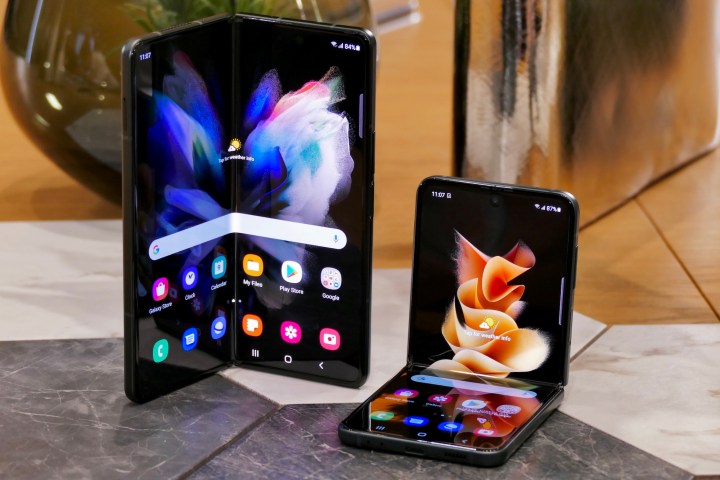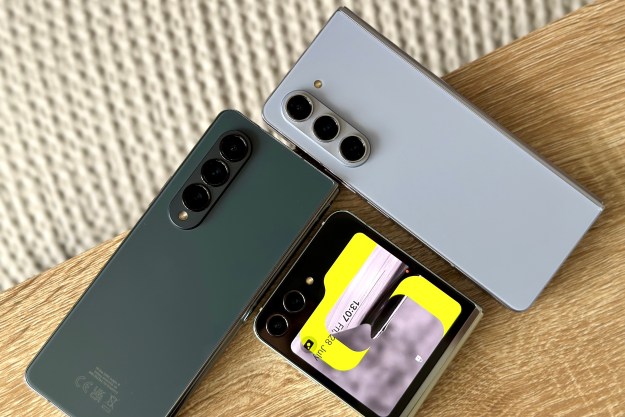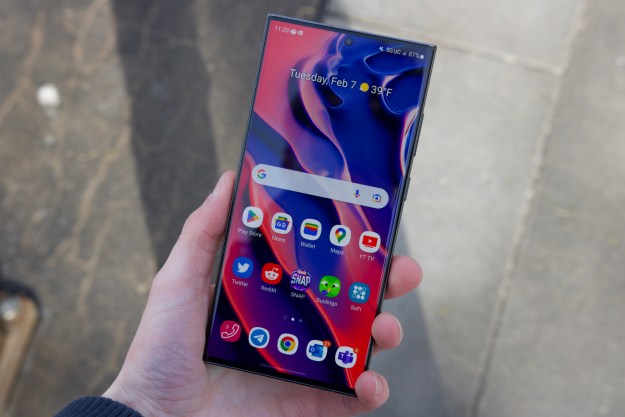Quick quiz question for you: Name one other widely available folding smartphone that’s not made by Samsung? You probably can’t, and that’s because outside of China, Samsung has already beaten every other manufacturer into submission, and won the folding smartphone race with barely any challenge at all.
Except, is this a win to be celebrated by anyone, Samsung included? Possibly not. Domination on this scale may not push many to take on Samsung, and that’s not good news for folding smartphones in general.
Folding supremacy
Samsung has put eight years into the development of folding smartphone technology so far, and after using the Galaxy Z Fold 3 and Z Flip 3, it’s easy to see how far it has come since the release of the original Galaxy Fold, and just how much catching up potential opponents have to do.

Advancements in durability, screen technology, and software make Samsung’s new phones usable every day, long before most others have even left the start line. Each fulfills Samsung’s promise of adding mass-market appeal to its folding smartphone range, and even the prices aren’t as horrific as before. You can buy the Z Flip 3 for around the same as a OnePlus 9 Pro or a Samsung Galaxy S21+, and while the Z Fold 3 is still very expensive, it’s $200 less than the first Fold, yet technologically superior in every way.
If you want a folding smartphone today, a Samsung is by far the best choice to make, coming in with the most impressive hardware at the lowest price. While this is an accurate statement, it’s also because Samsung is really the only game in town.
Where’s everyone else?
Various manufacturers have talked about releasing a folding smartphone for years, including Oppo and TCL, but only a few have actually done so. Most recently, Xiaomi released the Mi Mix Fold but only in China. It looks similar to the Galaxy Fold range but in true Xiaomi style, it doesn’t cost as much, except you’ve got to import one to try it.

Huawei for a while looked like it was going to be Samsung’s major challenger. The original Huawei Mate X was different from the Fold with an outwardly folding screen, as was the Mate XS. Huawei did sell the Mate XS in the U.K. but it didn’t come with Google Mobile Services. The Mate X2, released this year and Huawei’s current foldable effort, has not been released outside China. Well-publicized restrictions mean Huawei isn’t in the race, globally at least, at the moment.
Anyone else? Motorola brought back the Razr name for its folding smartphone, which is a nostalgic take on the original Moto Razr phone’s clamshell design and is now almost a year old, while Microsoft made the dual-screen, folding Surface Duo. To recap, that’s two folding smartphones you can’t buy, one that’s a year old, and another that’s not really a true folding smartphone at all.
What’s going on?
Folding smartphones are cutting-edge mobile devices and they cost a lot to develop. Samsung with its vast bank account and in-house display-tech expertise was always ideally positioned to propel itself ahead of the competition. However, it has now done so to such an extent, the competition may not even bother creating a competing folding smartphone at all.

Xiaomi could release the Mi Mix Fold internationally without doing much, but according to reviews like Mr. Mobile’s, it’s not a competitor to the Galaxy Z Fold 2, let alone the Z Fold 3. TCL has shown several folding smartphone concepts, but none have been made real yet, and despite its own screen expertise, it doesn’t have the brand recognition in smartphones that Samsung does.
Google is rumored to be working on a Pixel Fold, but there’s no firm evidence it will be released in 2021, and as for Apple we’ve only heard the most basic of rumors about a folding iPhone, and none have a potential release date this side of 2023. That means absolutely anything could happen, including the device never actually being released at all.
Samsung’s name is currently synonymous with folding smartphones, and few companies will be keen to invest the money needed to develop a phone worthy of taking on the Galaxy Z Fold 3, only to then be faced with the arduous task of grabbing mindshare from the public before actually selling any in meaningful quantities.
If it’s a losing battle, why start the fight? Samsung’s long-term investment in foldables has been so successful, it may have scared off the competition, and this is a problem. Not just for you and me, but for Samsung too.
This can’t be good, right?
If the only choice in folding smartphones is which Samsung foldable you pick, then it’s not great for us as buyers. Competition gives us choice, drives innovation, and pushes prices down. If companies aren’t prepared to put a new device up against Samsung, this won’t happen. Samsung is committed to making folding smartphones mainstream and affordable, but it can do so at its own pace for now.
Then there’s what this means for folding smartphones in general. If Samsung owns the segment, can folding smartphones survive in the market for the long term? Samsung obviously thinks so, and as costs reduce over time they have a better chance, but what if all other companies simply decide that instead of releasing a device that directly competes, they come up with something that does the same thing slightly differently. It’s still risky, but the pay-off could be far greater if the resulting device turned out to be better received than Samsung’s Galaxy Fold series.
#OPPOX2021 Rollable Concept phone is one of the technologies on display at #MWC21 in Shanghai. What innovations make the phone possible? The special Roll Motor powertrain allows the phone to unroll smoothly. #OPPOxMWC21
— OPPO (@oppo) February 24, 2021
Oppo is working on a rollable smartphone called the Oppo X 2021, for example, and LG showed something similar at the start of 2021, before deciding to leave the phone business entirely. The benefits are the same as a folding device but the execution is different, and there’s no denying how cool it looks when the screen unfurls in front of your eyes. Samsung would probably prefer if the competition followed it directly down the folding path, rather than taking an alternative route to arrive at the same destination, but right now that seems like a pointless, expensive, bandwagon-jumping endeavor.
The future isn’t set
Does all this mean you should be wary of buying the Galaxy Z Fold 3, or Z Flip 3? No, not at all. They’re without a doubt the most exciting smartphones you can buy at the moment, the latest models are truly everyday devices, and if you want to experience the future of mobile, it’s the only way to do so.
Yes, I said the future. While Samsung is without competition at the moment, the general concept of smartphone hardware that combines both small and large screens in one package for convenience is the way forward. But Samsung’s superiority means it’s not exactly clear whether that future will fold, roll, or do something entirely different.
Editors' Recommendations
- Galaxy AI is coming to more Samsung phones very soon
- The Galaxy Z Fold 6 and Flip 6 release date just leaked
- Every foldable phone we’re expecting in 2024
- Galaxy AI is now available for these other Samsung phones
- Should you buy the Samsung Galaxy Z Fold 5 or wait for the Z Fold 6?



